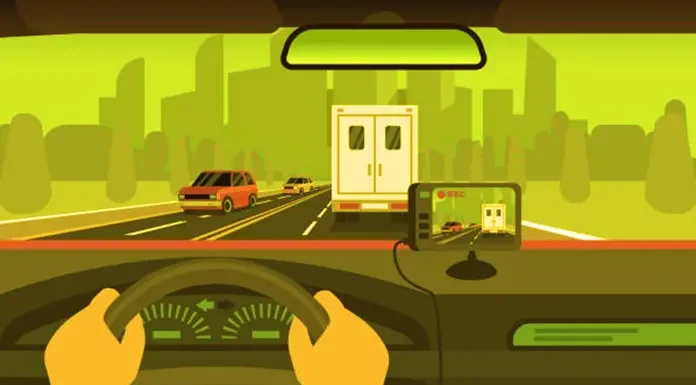In a world where the road can be as unpredictable as a blizzard, a dash cam becomes an essential companion for every journey. Whether you’re a daily commuter or an occasional road tripper, understanding dash cam image specs is crucial. Imagine driving through a snowstorm, visibility near zero, and suddenly, a deer darts across the road. The dash cam captures it all, serving as your silent witness. But what makes a dash cam effective in such scenarios? Let’s decode the specs that matter most.
Understanding Resolution – The Clarity Factor
When it comes to dash cameras, resolution is king. It dictates how clear and detailed your footage will be. Picture this: you’re trying to recall a license plate number after a minor fender bender, but the image is too blurry. The frustration mounts, and you might even yell in exasperation. A dash cam with a high resolution, such as 1080p or even 4K, can prevent such scenarios. It provides crisp, detailed images that capture every nuance, from the smallest street signs to the expressions on a pedestrian’s face.
But resolution isn’t just about clarity; it’s about peace of mind. Knowing that your dash camera records high-quality footage means you can drive with confidence, knowing that any incident will be documented with precision.
Frame Rate – Capturing Every Detail
While resolution is important, the frame rate is equally crucial. It determines how smoothly the video plays. Imagine watching a movie where the action scenes are choppy and stuttered. It doesn’t quite capture the thrill, does it? Similarly, a dash cam with a low frame rate might miss critical moments during a fast-paced sequence of events.
A frame rate of at least 30 frames per second (fps) is ideal for most situations. This ensures that even in high-speed scenarios, such as a sudden stop or a quick swerve to avoid an obstacle, your dash cam captures every detail smoothly. After all, in the expansile world of unpredictable traffic, every second counts.
Field of View – The Wider, the Better
The field of view (FOV) is like your car’s side mirrors, but without the blind spots. It determines how much of the road your dash camera can see. A wider FOV, typically between 120 to 170 degrees, ensures that nothing escapes your camera’s gaze.
Imagine navigating through heavy traffic, only to have a car sideswipe you from a lane you couldn’t see. A dash cam with a wide field of view captures those unexpected moments, providing a comprehensive view of the road. It’s like having eyes in the back of your head, always watching, always vigilant.
Night Vision – When Darkness Falls
Driving at night introduces its own set of challenges. The inky darkness, the glare from oncoming headlights, and the occasional animal darting across the road can make for a harrowing experience. This is where night vision comes into play. A dash cam with excellent night vision capabilities can be the difference between a clear recording and a murky, indistinguishable blur.
Consider a scenario where you’re driving home late at night, and a sudden blizzard hits. The road becomes a swirling mass of white, visibility plummets, and you can barely see the car in front of you. A dash cam with enhanced night vision ensures that even in such challenging conditions, your journey is recorded clearly, providing an invaluable record of events.
Storage Capacity – Never Miss a Moment
The best dash cam in the world is useless if it runs out of storage just when you need it most. High-resolution video files can be large, so ample storage is crucial. Look for dash cams that support large memory cards or have loop recording features. Loop recording ensures that when the storage is full, the oldest footage is automatically overwritten, ensuring continuous recording.
Imagine capturing a crucial moment on camera, only to discover later that it wasn’t saved because the memory was full. It’s an avoidable setback that can be easily remedied with the right dash cam specifications.
The Human Touch in Tech – A Personal Tale
Let’s weave in a personal anecdote to bring these specs to life. A family road trip, the kind where everyone piles into the car, snacks at the ready, and spirits high. The destination? A cozy cabin in the mountains, away from the bustle of daily life. The journey is smooth until, out of nowhere, a blizzard descends. Visibility drops, and the once cheerful chatter is replaced by tense silence.
The dash cam, with its high resolution and wide field of view, captures every moment of the white-knuckle drive. The family reaches the cabin, safe and sound. Later, they review the footage, a testament to their adventure, and can’t help but chuckle at the anxious expressions captured on camera.
In the end, it’s not just about the technology, but what it represents – security, assurance, and a witness to our everyday journeys. A dash cam isn’t just a piece of equipment; it’s a trusted guardian on the road.
Understanding dash cam image specs allows you to choose the right companion for your travels. So the next time you hit the road, you can drive with the confidence that your dash camera is ready to capture whatever the journey may bring.


